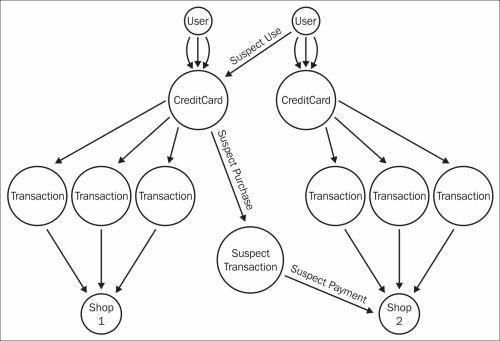We have seen a number of customers that are using Graph Database Management Systems such as Neo4j for fraud detection systems. The principle is quite simple: in many cases, the fraud of a particular nature is not defined by one transaction only, but by a chain of transactions that have their specific characteristics and that need to be compared to one another to see if they really do constitute a case of fraud.
In the following example, we are just looking at a suspect case of credit card fraud:

A particular user always uses his credit card for transactions at a particular store. Another user uses his credit card for similar transactions at a different store. And all of a sudden, there is this new transaction in the middle, which uses the credit card (let's say for a similar kind of transaction) in the other store. This kind of pattern may become flagged as a suspect pattern in some fraud detection systems. The system would not necessarily immediately block the credit card, but the risk score of that particular transaction / card combination would definitely go up. If the score reaches a certain threshold, that would mean that there is an increased likelihood for that transaction to be fraudulent, and the system would recommend that a particular action be taken.
The action would not be to recommend another product sale, but to put the credit card on hold and give the user a friendly customer service call to check whether this behavioral pattern is exceptional or not. The principle of this fraud detection system, however, would be very similar to that of a retail recommender system: define a pattern, detect a pattern, and act on the occurrence of that pattern with some kind of business-related measure.
